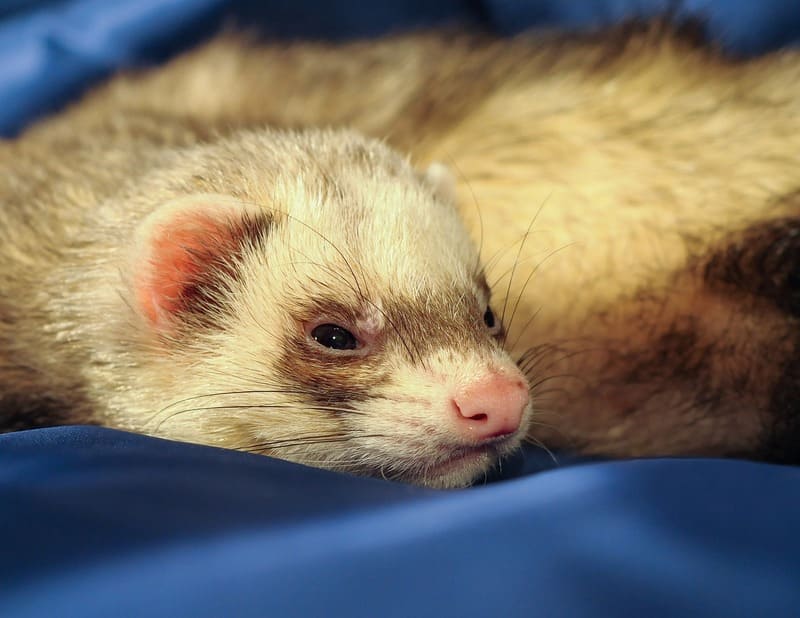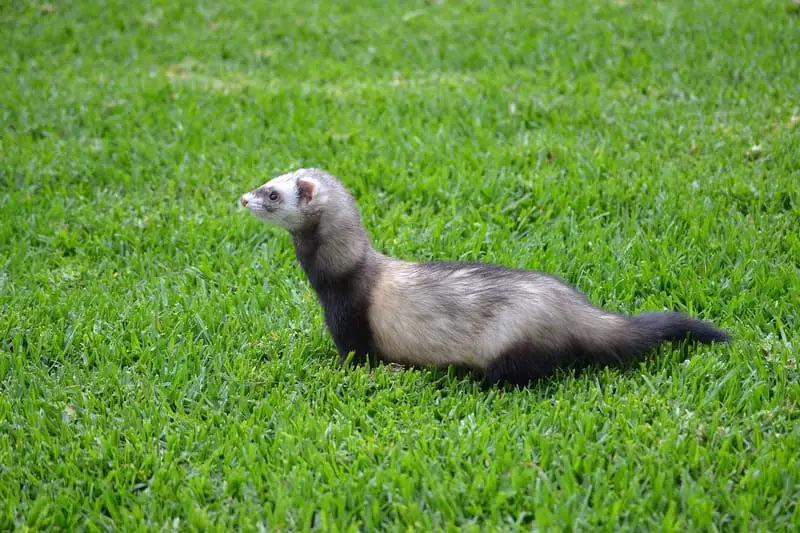One of the intriguing aspects of ferret behavior is their activity patterns, specifically whether they are more active during the day or at night. Understanding their natural rhythms and tendencies is crucial for providing the best care for these inquisitive mammals. In this comprehensive exploration, we will delve into the diurnal (daytime) and nocturnal (nighttime) behaviors of ferrets, their natural instincts, and how to create a suitable environment for their well-being.

The Nature of Ferrets
Ferrets (Mustela putorius furo) belong to the mustelid family, which includes various carnivorous mammals like weasels, minks, and otters. These creatures are known for their playful and energetic behavior, as well as their inquisitiveness. Ferrets are domesticated descendants of the European polecat, a close relative with similar activity patterns.
In the wild, European polecats are primarily crepuscular, which means they are most active during dawn and dusk. This is believed to be an adaptation that helps them avoid the extreme heat of the day and the potential predators of the night. It’s important to keep in mind that while ferrets share some characteristics with their wild ancestors, domestication has shaped their behavior, and individual ferrets can exhibit varying activity patterns.
Diurnal vs. Nocturnal Behavior
Understanding whether ferrets are more diurnal or nocturnal can vary depending on individual preferences, living conditions, and routines. Let’s delve into both diurnal and nocturnal behavior and explore the factors that influence a ferret’s activity patterns.
Diurnal Behavior (Daytime)
Diurnal animals are primarily active during the daylight hours, which means they are more active when it’s light outside. Ferrets can exhibit diurnal behavior in certain situations:
- Social Interaction: Ferrets are social animals that enjoy the company of their human caregivers. When people are active and present during the day, ferrets often adjust their schedules to be awake and interact with their human companions. This is particularly evident when ferrets form strong bonds with their owners.
- Routine and Training: Ferrets are intelligent animals and can adapt to daily routines. Many ferret owners establish daily playtimes and training sessions during daylight hours, encouraging their ferrets to be more active during the day.
- Natural Light: The presence of natural light can influence a ferret’s activity pattern. A well-lit environment during the day may encourage more diurnal behavior.
- Napping: While ferrets are known for their playfulness, they also enjoy frequent napping, typically in short bursts. This means that even during their most active times, they may alternate between play and napping.
Nocturnal Behavior (Nighttime)
Nocturnal animals are primarily active during the nighttime hours when it’s dark. Ferrets can also exhibit nocturnal behavior under specific conditions:
- Living Environment: The environment in which a ferret is kept can significantly influence its activity pattern. Ferrets that are kept in quiet, low-light, or dark environments may become more nocturnal. For example, if a ferret is housed in a room with limited natural light, they may become more active at night.
- Cage and Sleeping Area: Ferrets often have designated sleeping areas or cages where they retreat for rest. If their sleeping area is dark and quiet, they may be more inclined to be nocturnal, as they associate that environment with sleep.
- Sensory Stimulation: Nocturnal behavior can be triggered by sensory stimulation during the night. For example, sudden loud noises, bright lights, or even the presence of other pets or animals in the household may disturb a ferret’s sleep and make them more active at night.
- Age and Health: Young ferrets and ferrets in excellent health tend to be more active and may exhibit nocturnal behavior as part of their playful nature. Aging ferrets or those with health issues may sleep more and be less active during the night.

Crepuscular Behavior
While diurnal and nocturnal behaviors represent the extreme ends of the activity spectrum, many ferrets are, in fact, crepuscular. Crepuscular animals are most active during dawn and dusk, which allows them to enjoy the benefits of both day and night. This behavior is often observed in the wild ancestors of ferrets, the European polecats.
Crepuscular behavior can be influenced by various factors, including:
- Natural Instinct: The crepuscular behavior of ferrets reflects their natural instincts to be active during times when prey is also active. This allows them to hunt and forage more effectively.
- Temperature: Crepuscular activity helps ferrets avoid the extreme temperatures of the day and the potential threats of the night. The dawn and dusk periods are typically cooler and safer.
- Human Interaction: Many ferrets adapt their activity patterns to align with their human caregivers’ routines. If you establish playtimes and engage with your ferret during the dawn or dusk, they may become more crepuscular.
- Light Levels: The gradual changes in light during dawn and dusk may encourage crepuscular behavior. If a room’s lighting conditions mimic these natural transitions, ferrets may be more active during those times.
- Social Interaction: Ferrets are social animals, and they often become more active when they have companions. If you have multiple ferrets, they may engage in play and interaction during dawn and dusk.
Creating an Ideal Environment for Ferrets
To ensure the well-being of your ferret and promote healthy activity patterns, it’s essential to create an ideal living environment that accommodates their natural behaviors:
1. Social Interaction
Ferrets thrive on social interaction. Spend quality time playing, cuddling, and engaging with your ferret. This not only keeps them mentally and physically active but also helps establish a bond between you and your pet.
2. Routine and Enrichment
Establish a daily routine that includes playtime and mental stimulation. Use interactive toys, tunnels, and hide-and-seek games to keep your ferret engaged and provide physical exercise.
3. Proper Lighting
Ensure that your ferret’s living area receives adequate natural light during the day. Natural light can help regulate their circadian rhythms and encourage more diurnal or crepuscular behavior.
4. Quiet Sleeping Area
Ferrets should have a quiet, dark, and comfortable sleeping area. This is essential for promoting restful sleep. Providing a cozy and dark sleeping environment can help regulate their activity patterns.
5. Consistency
Consistency in your ferret’s routine and living conditions is crucial. Abrupt changes in lighting, noise, or routines can disrupt their natural behavior patterns.
6. Multiple Ferrets
If you have more than one ferret, they can engage in play and social interactions with each other. Ferrets are highly social animals, and companionship can help keep them active and content.
7. Veterinary Care
Regular check-ups with a veterinarian experienced in ferret care are essential. Health issues can affect a ferret’s activity levels, so it’s important to monitor their health and well-being.

Conclusion
Ferrets are captivating and inquisitive pets with a range of activity patterns that can vary from diurnal to nocturnal, crepuscular, or a combination of these. While individual ferrets may have their own preferences, their behavior can be influenced by factors such as their living environment, interaction with their human caregivers, and sensory stimulation.
Understanding and accommodating your ferret’s natural behavior is essential for their well-being. Whether they are more active during the day or at night, creating an environment that provides mental and physical stimulation, social interaction, proper lighting, and a cozy sleeping area ensures that your ferret leads a happy and healthy life. Ultimately, the key to fostering a thriving relationship with your ferret lies in recognizing and respecting their unique activity patterns and needs.
